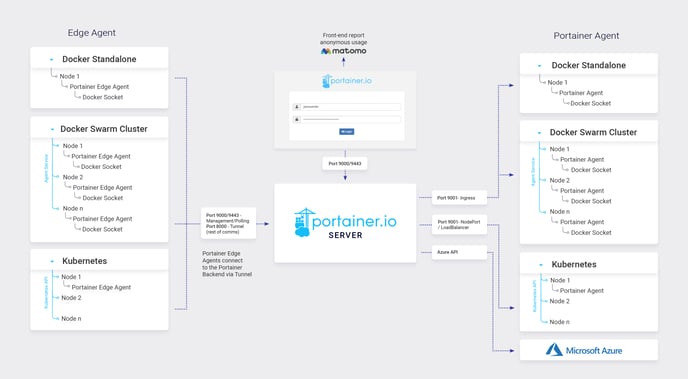Look, if you've ever tried to explain to a developer why they can't just kubectl apply directly to production, you know the pain. Portainer Business Edition is what happens when someone finally said "fuck it, let's make container management not suck for teams."
The Problem: Container Management Gets Messy Fast

Your team starts with a few Docker containers, everything's great. Then you add Kubernetes, and suddenly half your team is drowning in YAML files. Add some security requirements, and now nobody knows who can deploy what where.
Portainer CE works fine when it's just you and maybe one other person. But once you hit 5+ people touching containers, shit gets real. That's where Business Edition comes in - it's basically CE but with the grown-up features you actually need:
- RBAC that doesn't suck: 7 predefined roles that map to how teams actually work
- Audit logs: Because your security team will ask "who deployed that?" at 3 AM
- Real authentication: Active Directory, LDAP, OAuth - whatever you already use
How It Actually Works

Portainer uses a hub-and-spoke model - one server manages everything through lightweight agents. The agents are tiny (like 15MB) and handle the actual container commands. Works great until your network goes to hell, then the Edge Agent handles intermittent connections.
Multi-orchestrator support means you're not locked into Docker or Kubernetes - run whatever makes sense. Though let's be honest, if you're running Docker Swarm in 2025, you probably have your reasons.
Pricing reality: Starts at $995/year for up to 15 nodes. The first 3 nodes are free, which is actually useful for testing. But watch the node count - it adds up fast if you're running a lot of single-container VMs. One customer went from $1k/year to $8k/year when they migrated from 10 VMs to 50 single-container nodes.
When You Actually Need It
Don't fall for the marketing bullshit about "enterprise-grade" everything. You need Business Edition when:
- More than 5 people need access - CE's basic auth becomes a nightmare
- Compliance requirements - Your auditors want to see who did what when
- You want someone to blame - Community support is great until production breaks at 2 AM
- Integration with existing auth - Nobody wants to manage another set of user accounts
If you're just playing around or have a small team that trusts each other, CE is totally fine. The GitHub community is actually pretty helpful for most issues.
Bottom line: It's a web UI for Docker/Kubernetes that doesn't completely suck, with enterprise features that you might actually use. Try the 3 free nodes first - if you like it, then worry about paying.




